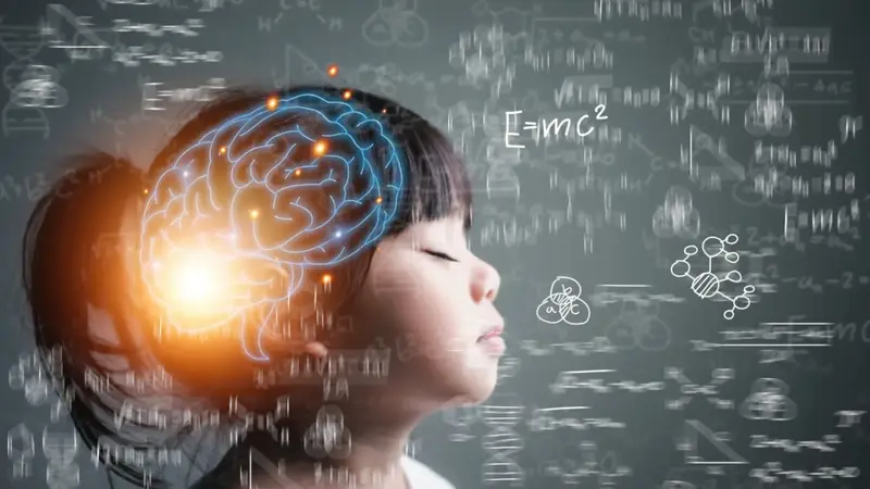Overview of AI in Education
Artificial Intelligence (AI) is no longer just a concept from science fiction; it’s rapidly becoming a core component of various industries, with education as no exception. From personalised learning experiences to automated administrative support, AI is redefining how we approach teaching and learning. However, is this shift towards AI in education merely a trend, or does it represent a foundational change for the future of learning?
At its core, AI consists of complex algorithms designed to analyse data, learn patterns, and adapt to provide meaningful interactions. In education, this means potential for a deeply personalised learning experience, increased efficiency, and valuable insights into student engagement and performance. As we examine the role of AI in education, we can explore its key benefits, challenges, current applications, and what may lie ahead.
The Benefits of AI in Education
Integrating AI into educational settings can bring numerous advantages, benefiting both students and educators. Some of the core advantages include:
1. Personalised Learning
- Customised Learning Paths: AI can create tailored learning experiences by analysing individual strengths and weaknesses, much like a dedicated tutor focused on specific student needs.
- Adaptive Learning Platforms: Tools like DreamBox and Khan Academy use AI to adjust content in real-time, ensuring that each student receives instruction at their optimal level.
2. Immediate Feedback and Assessment
- Real-Time Insights: AI-powered tools provide instant feedback on assignments, enabling students to quickly understand their mistakes and progress faster.
- Automated Grading: By handling routine grading, AI frees teachers to concentrate on more nuanced aspects of teaching, such as student engagement and critical thinking development.
3. Enhanced Engagement and Access
- 24/7 AI Tutors and Chatbots: With AI, students can get help at any time, allowing learning to continue beyond school hours. These tools make learning more accessible and interactive.
- Gamified Learning Experiences: AI enables gamified educational content, helping motivate students to stay engaged with fun, interactive learning activities.
4. Streamlined Administrative Processes
- Automating Administrative Tasks: AI can handle scheduling, track attendance, and assist with admissions, which allows educators to focus more on teaching.
- Optimising Resource Allocation: AI helps identify areas that may need more resources or attention, allowing institutions to manage their resources more effectively.
Potential Challenges of AI in Education
Despite the numerous benefits, integrating AI in education comes with challenges that need careful consideration. Here are some potential drawbacks:
1. Reduced Human Interaction
- Social Skills Development: An over-reliance on AI could limit face-to-face interaction, which is essential for developing social skills and emotional intelligence. Human educators bring empathy, encouragement, and mentorship that AI cannot replicate.
2. Privacy and Security Concerns
- Data Sensitivity: AI-driven systems rely on large amounts of student data, which raises concerns about data privacy. Schools must ensure strong data security to protect personal information.
3. Digital Divide and Equity Issues
- Access to Technology: Not all students have the necessary technology at home, which could widen educational inequalities. Schools must address this "digital divide" to ensure equal learning opportunities.
4. Potential for Algorithmic Bias
- Bias in Data and Outcomes: AI is only as unbiased as the data it’s trained on. If training data reflects biases, the AI may inadvertently perpetuate them, leading to unfair educational experiences.
Current Examples of AI in Education
AI is already making a tangible impact in educational environments. Below are some examples of institutions and their AI applications:
| Institution |
AI Application |
Impact |
| Carnegie Learning |
AI-powered personalised maths instruction platform |
Provides customised support for K-12 students, improving maths skills. |
| Brainly |
AI-based Q&A platform linking students with peers and experts |
Encourages collaborative learning and provides instant homework help. |
| Carnegie Mellon University |
AI system for student performance prediction |
Enables early intervention and personalised support for at-risk students. |
Looking Ahead: The Future of AI in Education
AI in education is still evolving, and its future promises exciting advancements. Here are a few directions AI integration might take:
1. Broader Adoption Across Educational Institutions
- Standard Integration: As institutions recognise the benefits, AI tools may become a staple in primary schools, high schools, and universities alike.
2. Continued Research and Innovation
- Advanced Development: Ongoing research will continue to enhance AI's capabilities, from improved algorithms to tools that can better assess and respond to individual student needs.
3. Expanding AI-Powered Educational Tools
- Innovative Solutions: From virtual reality classrooms to AI-guided career advising, new tools are likely to emerge, offering increasingly dynamic and immersive learning experiences.
4. Ethical Guidelines and Policy Development
- Frameworks for Ethical Use: As AI's role in education grows, ethical standards and regulations will be essential to ensure equitable and responsible implementation.
FAQs on AI in Education
Q. Can AI replace teachers?
A. No, AI cannot replace teachers. While it supports educational processes, it lacks the empathy, mentorship, and adaptability of human educators. AI should complement, not replace, human teaching by handling routine tasks and offering data-driven insights.
Q. How does AI impact data privacy in education?
A. AI relies on extensive data, which raises concerns about privacy. Educational institutions must adopt stringent policies to secure data and ensure it is used responsibly. With proper measures, AI can be both a safe and beneficial educational tool.
Conclusion
AI’s potential in education is immense, promising personalised learning experiences and operational efficiency. However, successful implementation requires balancing AI's capabilities with ethical considerations, data privacy, and ensuring equitable access. As AI in education continues to evolve, finding a synergy between technological innovation and the human touch will be crucial for creating an inclusive, effective learning environment. For further insights into the role of AI in education, explore additional articles on our website.
References








